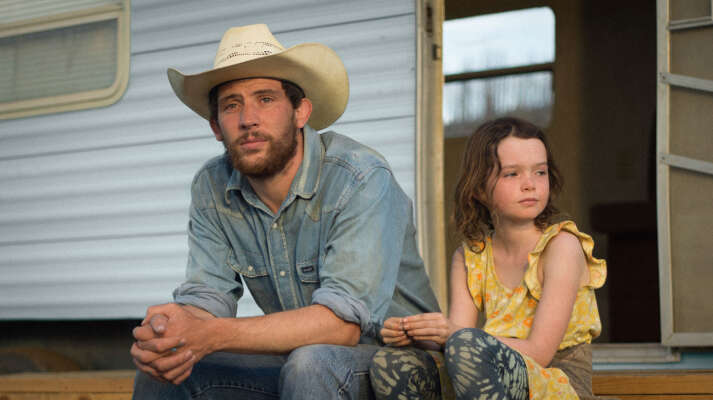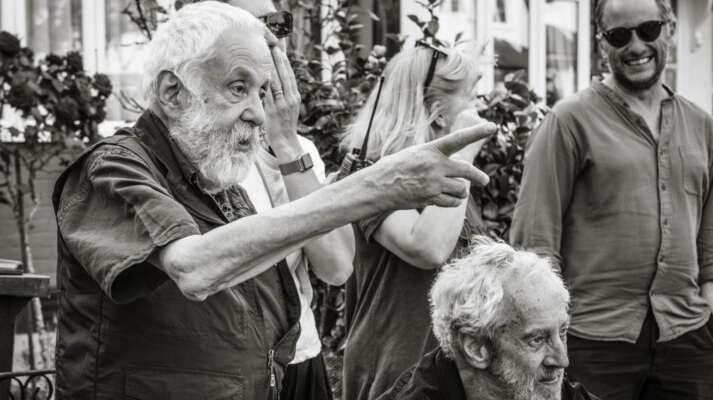The People of Paterson
Meet some of the city’s real life heroes.
The People of Paterson
Written by Peter Bowen
In Jim Jarmusch’s PATERSON, Adam Driver plays Paterson, a poet and bus driver, whose daily journey through town brings him into contact with the city’s extraordinary citizens. His friend and bartender, Doc (Barry Shabaka Henley), keeps a shrine to the many fascinating figures who make up Paterson’s unique history. Following Doc’s lead, we’re showcasing some of the town’s remarkable citizens, from athletes and anarchists to comics and poets.
Gaetano Bresci | Anarchist

In PATERSON, two locals (Kara Hayward and Jared Gilman, the two young actors who brought such magic to Wes Anderson’s Moonrise Kingdom) board Paterson’s bus talking excitedly about a famous local anarchist who killed an Italian king over a century ago. For Paterson, such tales of local history add another rich veneer to the deeply burnished urban landscape he observes on his daily route. Gaetano Bresci, who became infamous for assassinating King Umberto I of Italy in 1900, gave Paterson at that time a reputation as a hotbed of international anarchism. Having emigrated from Italy at the age of 28, Bresci moved to the New Jersey town where he found work as a weaver in one of its large textile factories. Paterson, then dubbed the “Silk City,” attracted wide-spread immigration from Italian regions familiar with how to work with the expensive fabric. The harsh working conditions in Paterson’s factories also spawned another cottage industry––anarchism. In addition to a flourishing trade in activist newspapers, including the bi-weekly Italian La Questione Sociale, Paterson hosted The Society for the Right to Existence, the largest anarchist group in the region, which Bresci joined shortly after immigrating to America. While it’s unclear how much these anarchist groups turned Bresci into an assassin, they certainly provided rich soil to cultivate revolution. At his trial, Bresci exclaimed, “When in Paterson I read about the events in Milan where even cannons were used, I wept from anger and prepared myself for revenge.” After leaving New Jersey for Italy, Bresci, sentenced to many life terms for his crime, never returned to Paterson. But his actions brought increased attention by local and national law enforcement to police the city’s more radicalized citizens.
Rubin “Hurricane” Carter | Boxer

Crooned about in a Bob Dylan song as the man who “could-a been the champion of the world,” and then immortalized in the Denzel Washington film, The Hurricane, Rubin Carter was a boxer whose meteoric career ended suddenly and violently on the streets of Paterson. Born in Clifton, NJ in 1937, Carter grew up in Paterson before he was arrested at the age of 12 for attacking a man with a Boy Scout knife. Even though the boy claimed the man had attempted to molest him, the court sentenced Carter to six years at Jamesburg State Home for Boys. A year before his sentence was to be up, Carter escaped and joined the army. Sent to Germany, Carter learned to box in the service, quickly rising up the ranks by winning several European light-welterweight championships before returning home. But before starting his boxing career in America, Carter was immediately arrested and compelled to serve the remainder of his juvenile sentence when he arrived in Paterson. Once a free man, Carter became a real contender, gaining the name “Hurricane” for the speed and force of his punches, a power he demonstrated when he knocked out the then-welterweight world champion in a non-title bout in 1963. In Paterson, Carter gained a reputation for his strident opposition to the treatment of African-Americans in his neighborhood as much as for his boxing bouts. In 1966, as Carter was training for the World Championship, he was arrested for a triple homicide at the Lafayette Bar & Grill in Paterson, a crime for which he was convicted and sentenced, despite the shaky evidence against him, to three life sentences. Continuing to proclaim his innocence, Carter published in 1974 an autobiography, The 16th Round: From Number 1 Contender to Number 45472, which brought widespread attention to him and his plight. Bob Dylan wrote the song “Hurricane” to publicize this miscarriage of justice. In 1985, after many appeals, U.S. District Court Judge H. Lee Sarokin decided in favor of Rubin, writing that his conviction had been “predicated upon an appeal to racism rather than reason, and concealment rather than disclosure." After leaving prison, Carter did not return to Paterson, but moved to Toronto.
Lou Costello | Comedian
Before he was Bud Abbott’s comic partner, Lou Costello was born Louis Francis Cristillo in Paterson in 1906. His father, Sebastiano Cristillo, had emigrated from Italy in 1898 to Paterson, where his older brother, Philip, had already settled a few years before. A rambunctious child, Costello developed a reputation as a prankster and delinquent. The fact that his fifth-grade teacher Miss Whitehead made him stay after school to write “I’m a bad boy” on the chalkboard 150 times may very well have been the origin of his most famous catchphrase, “I’m a baaaad boy.” A baseball player and boxer, Costello also became an avid movie fan, often skipping school to spend his afternoons at the U.S. Theater in downtown Paterson to re-watch the latest Charlie Chaplin film. At 12, he told his mom, “One day I’m going to be a movie star and make you proud of me…You’ll be the most famous mom in the world.” The next year, he entered and won a Charlie Chaplin Halloween contest at the Paterson Armory. Spurred on by his brother’s success with his jazz band, Pat Cristillo and His Gondoliers, Costello headed west to make his name in Hollywood as an actor. Three years later, broke and slightly broken, he came back to the East Coast, eventually meeting up with Abbott a few years later in New York City. For the next 20 years, Abbott and Costello became comedy’s dynamic duo, first on radio, and then in Hollywood, where they made 36 films together, many of them box-office hits. Costello died in 1959, two years after the two formally ended their partnership. Although he was interred at Calvary Cemetery in Los Angeles, Costello’s hometown never forgot him. In 1992, Paterson erected a statue of their favorite son in a park that was renamed Lou Costello Memorial Park.
Larry Doby | Baseball Player

Larry Doby, the second African-American baseball player to break into Major League Baseball, hailed from Paterson. Although he was born and raised in South Carolina, Doby moved north at age 14 to live with his mother and attend Paterson Eastside High School. There he proved an all-sports star athlete, lettering in track, basketball, and football, as well as baseball. His sportsman-like behavior also made him a much beloved player, being named class athlete in the 1942 yearbook. When the football team, after winning the state championship, was invited to a promotion game in Florida, they turned down the offer when they learned that Doby, the only African-American man on the team, would not be permitted to play. Courted by several colleges, Doby accepted an athletic scholarship to play basketball at Long Island University, primarily to stay close to Paterson, where Helyn Curvy, his sweetheart and future wife, lived. Doby’s life, however, changed in the summer before college when he was recruited to play for the Newark Eagles, a local Negro League baseball team. Like many other Americans, Doby put his life on hold during World War II, signing up to serve in the Navy. Growing up, Doby never dreamed of becoming a professional athlete, imagining instead that he would get a college degree and return to Paterson as a PE teacher and coach. But when he returned from the war, a new world awaited him. “Growing up in a segregated society, you couldn't have thought that that was the way it was gonna be,” he later recounts to the MLB website. “There was no bright spot as far as looking at baseball until Mr. Robinson got the opportunity to play.” In 1947, just months after Jackie Robinson broke the color barrier by being the first African American in the major leagues, Doby would be signed with the Cleveland Indians. The next year, he would become the first African-American player to hit a home run in the World Series.
Allen Ginsberg | Poet

The celebrated Beat poet Ginsberg was only four when his family moved from Newark to Paterson, only a few miles away. But his childhood in this new town would be quickly marred by family upheavals as his mother began to suffer from mental illness and his father, a high-school English teacher, struggled to pay the bills. Despite such difficulties, Allen’s father, Louis Ginsberg, never lost his love for poetry. He often gave local readings of his own poems as well as published his verse in the Paterson Morning Call and the Paterson News. In spite of his complicated home life, the young Ginsberg found his creative identity while at Paterson’s Central High School. While there he published his first article, “On Homework in General,” and got a job writing about school life in a column for the Paterson Evening News. After going to college at Columbia University, where he would first meet his fellow beats, like William S. Burroughs and Jack Kerouac, Ginsberg returned often to his hometown. On one return trip, he was assigned the job of interviewing William Carlos Williams, the local poet who would come to have a strong influence on his work. According to local Paterson poet Maria Mazziotti Gillan, Williams persuaded Ginsberg to start writing poems about his life and world around him, a move that pushed him into the confessional mode of Howl and his 1949 poem “Paterson.” While Ginsberg would move on to San Francisco, his hometown still haunts much of his poetry. His 1959 masterpiece, “Kaddish,” dedicated to his mother, Naomi, for example, contains the lines:
“By long nites as a child in Paterson apartment, watching over your nervousness—you were fat—your next move—
By that afternoon I stayed home from school to take care of you—once and for all—when I vowed forever that once man disagreed with my opinion of the cosmos, I was lost…”
Bruce Vilanch | Oscar Awards Writer

While the Oscar quip writer Bruce Vilanch is most closely linked to Tinseltown, even taking up residence in one of the Hollywood Squares, the comedian actually hails from Paterson. Having to move there from New York City at four, Vilanch begrudgingly acknowledges his Jersey roots and the life experience it gave him. “It was ethnically very diverse," Vilanch told NorthJersey.com. "A lot of Jews and Italians and Irish, and then blacks and Puerto Ricans. But we all sort of got along in that kind of '50s way that I guess wasn't really getting along at all. But we didn't see it that way.” As a young man, Vilanch’s mother pointed him in the direction of show business by signing him as a chubby child model. Eventually, after a stint as an entertainment reporter, he was hired by Bette Midler, who started him off on his comedy career and in the direction of Hollywood.
William Carlos Williams | Poet

William Carlos Williams, the author of the epic poem Paterson, did not actually live in Paterson. He grew up and later settled in the neighboring town of Rutherford. Born 1883, he was educated in Rutherford until he was sent abroad to Switzerland and Paris at the age of 14. After graduating from the University of Pennsylvania School of Medicine in 1906, Williams left the area to accept internships in New York City and Leipzig. In the end, Williams returned to Rutherford to settle down and establish a medical practice. In addition to his private practice, he served as head pediatrician at Passaic General Hospital. At night, Williams wrote poetry, often using his daily travels to visit patients as the raw material for his verse. By 1926, inspired by James Joyce’s treatment of Dublin in Ulysses, Williams wrote a long poem about the town of Paterson. Like Joyce, Williams wanted to make a city the hero of his work. While nearby Manhattan might have been the obvious subject, Williams explains “New York was too big, too much a congeries of the entire world’s facets. I wanted something near home, something knowable.” Williams often visited Paterson for work, repeatedly stopping by the Falls to meditate on its power and beauty. He also dove deep into the city’s history, studying up on works, such as William Nelson and Charles A. Shriner’s History of Paterson and its Environs and Charles Pitman Longwell’s 1901 chronicle, A Little Story of Paterson, in order to transform the real metropolis into a character in his own poetic imagination. His fascination with the city went on to spawn a five-volume epic called Paterson, published between 1946 and 1958. In the preface, Williams explains "that a man himself is a city, beginning, seeking, achieving and concluding his life in ways which the various aspects of a city may embody—if imaginatively conceived—any city, all the details of which may be made to voice his most intimate convictions." Over his long and productive life, Williams published over 20 volumes of poetry, and nearly 30 other books, including short stories, essays, letters, and biographies. But Paterson remains perhaps his greatest accomplishment.



